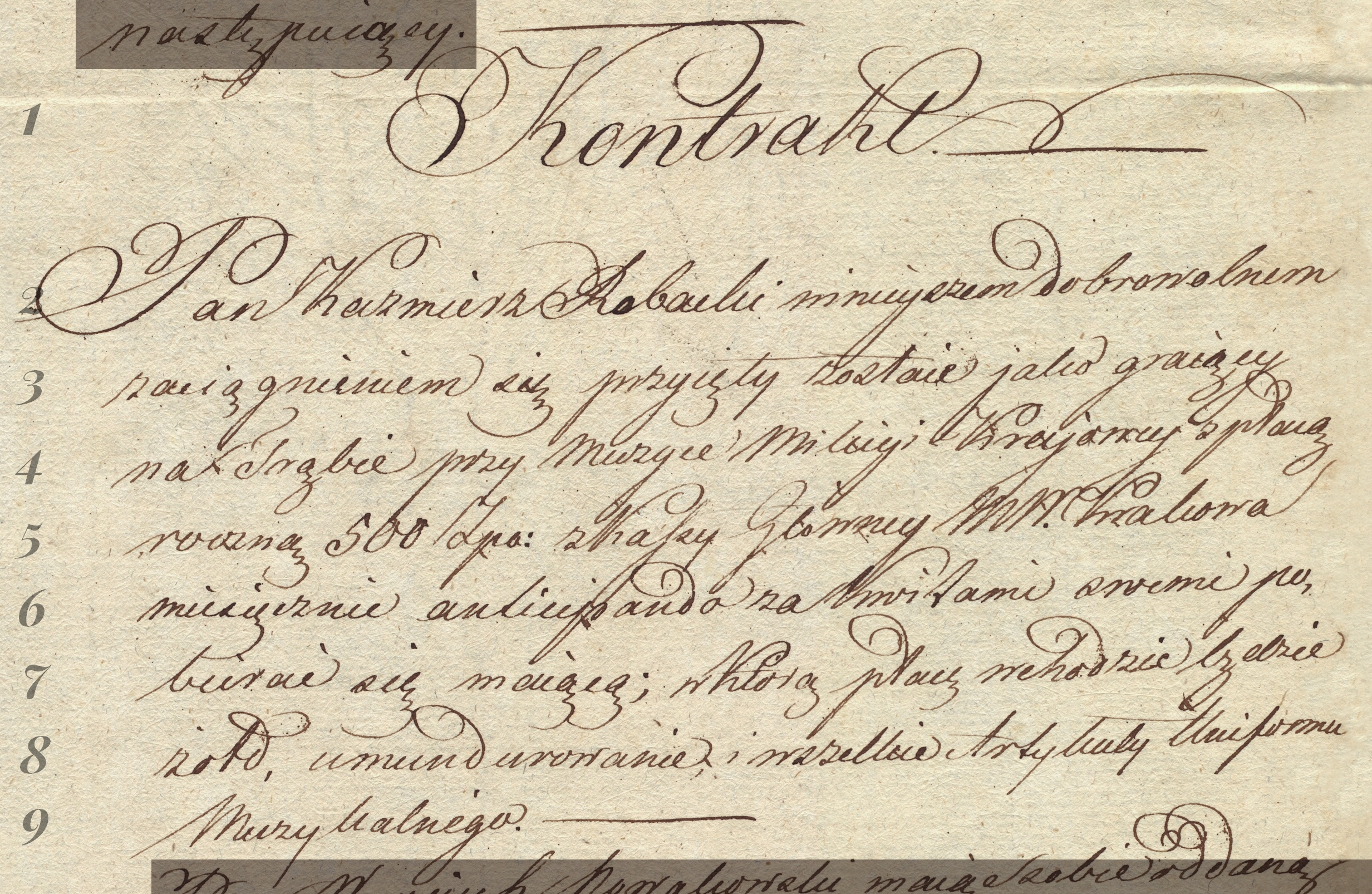Exercise 4
horizontal
1.
1. Kontrakt
2.
2. Pan Kazmierz Robacki ninieyszem dobrowolnem
3.
3. zaci─ģgnieniem si─Ö przyi─Öty zostaie jako grai─ģcy
4.
4. na Tr─ģbie przy Muzyce Milicyi Krajowey z p┼éac─ģ
5.
5. roczn─ģ 500 Zpo zKassy G┼é├│wney WM Krakowa
6.
6. miesi─Öcznie anticipando za Kwitami swemi po
7.
7. biera─ć si─Ö mai─ģc─ģ w Kt├│r─ģ p┼éac─Ö wchodzic b─Ödzie
8.
8. żołd umundurowanie i wszelkie Artykuły Uniformu
9.
9. Muzykalnego
Principles of transcription
- Maintain the original entry - carry out the transcription as faithfully as possible to the original, without correcting the writer's mistakes.
┬Ā - Lines of text - the transcription should be written in lines (fragments in grey should be omitted). If the word is divided between two lines, it should be written as in the original, that is, without connecting it.
┬Ā - Punctuation - all punctuation marks or others (e.g. commas, full stops, hyphens, etc.) appearing in the original should be ignored.
┬Ā - Writing capital letters - the mechanism recognises both small and capital letters as correct.
┬Ā - Shortening - the general rules accepted by us say that a contraction used by the scribe should be written in full. This document contains contractions which are exceptions to the rule, in other words, those which do not need to be written in full.
┬Ā - Letters with diacritic marks - if the text includes letters with diacritic marks which are typical for the Polish language, we retain them.
┬Ā
You can find the full principles of transcription here.
Helpful tips
- This document contains contractions which have been defined as exceptions and which do not need to be written in full.
┬Ā - The scribe who wrote this document used two differing forms of the letters s and t.
┬Ā - The scribe used characteristic tails for the letters ─ģ and ─Ö.
┬Ā - The letter ┼é may cause the greatest difficulty. In the event of difficulty, use Model letters.
┬Ā
You will find more useful tips for transcribing old texts here.
Exercise 4
Model letters








































Exercise 4
Abbreviations
![W[olnego] M[iasta] Krakowa](https://dawnepismo.ank.gov.pl/files/practice/shortcuts/exercise-4/cw04wolnegomiastakrakowa.png)
![z[łote] po[lskie]](https://dawnepismo.ank.gov.pl/files/practice/shortcuts/exercise-4/cw04zlotychpolskich.png)
